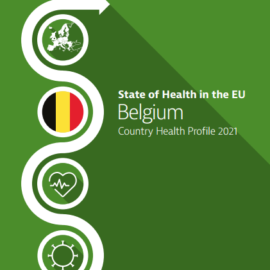
Ingrid Pelgrims, Brecht Devleesschauwer, Madeleine Guyot, Hans Keune, Tim S. Nawrot, Roy Remmen, Nelly D. Saenen, Sonia Trabelsi, Isabelle Thomas, Raf Aerts, and Eva M. De Clercq
BMC Public Health (2021) 21:635
Abstract
Background
Mental health disorders appear as a growing problem in urban areas. While common mental health disorders are generally linked to demographic and socioeconomic factors, little is known about the interaction with the urban environment. With growing urbanization, more and more people are exposed to environmental stressors potentially contributing to increased stress and impairing mental health. It is therefore important to identify features of the urban environment that affect the mental health of city dwellers. The aim of this study was to define associations of combined long-term exposure to air pollution, noise, surrounding green at different scales, and building morphology with several dimensions of mental health in Brussels.
Methods
Research focuses on the inhabitants of the Brussels Capital Region older than 15 years. The epidemiological study was carried out based on the linkage of data from the national health interview surveys (2008 and 2013) and specifically developed indicators describing each participant’s surroundings in terms of air quality, noise, surrounding green, and building morphology. These data are based on the geographical coordinates of the participant’s residence and processed using Geographical Information Systems (GIS). Mental health status was approached through several validated indicators: the Symptom Checklist-90-R subscales for depressive, anxiety and sleeping disorders and the 12-Item General Health Questionnaire for general well-being. For each mental health outcome, single and multi-exposure models were performed through multivariate logistic regressions.
Results
Our results suggest that traffic-related air pollution (black carbon, NO2, PM10) exposure was positively associated with higher odds of depressive disorders. No association between green surrounding, noise, building morphology and mental health could be demonstrated.
Conclusions
These findings have important implications because most of the Brussel’s population resides in areas where particulate matters concentrations are above the World Health Organization guidelines. This suggests that policies aiming to reduce traffic related-air pollution could also reduce the burden of depressive disorders in Brussels.


